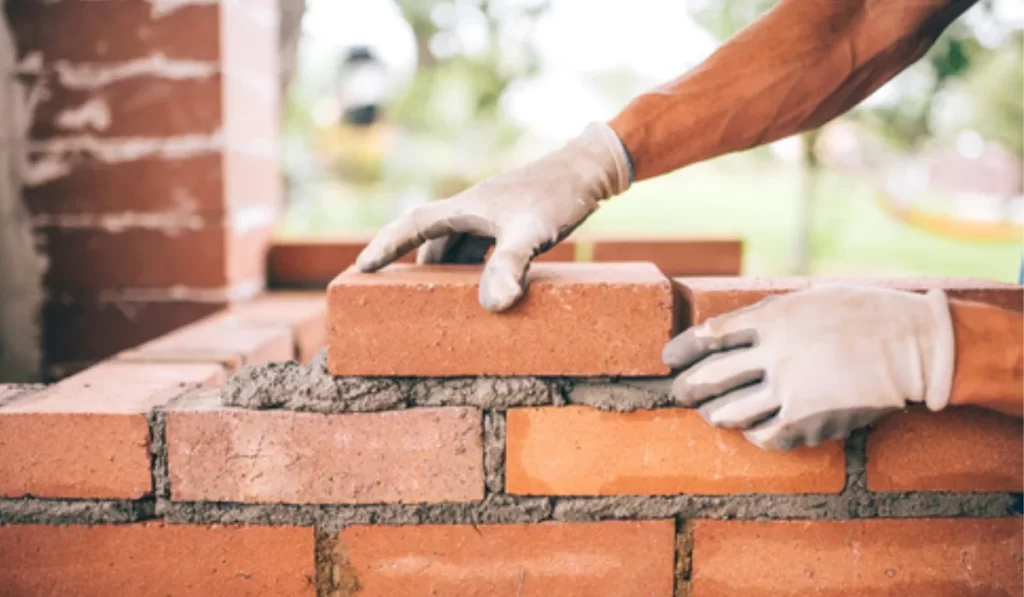Brick masonry is a timeless craft, a blend of art and science that you can see manifested in countless structures worldwide. This construction method has been around for thousands of years, and its resilience, versatility, and aesthetic appeal continue to make it a popular choice today.
Mortar is crucial in brick masonry, bonding individual bricks to form a solid, durable structure. It fills the gaps, evens the load, and enhances the structure’s aesthetic appeal. Understanding mortar isn’t just a nice-to-have for a masonry contractor Orlando and DIY enthusiasts; it’s a necessity.
Understanding Mortar
In brick masonry, mortar is a workable paste composed of binder and aggregate particles combined with enough water to initiate hydration and make it moldable. Once set, it creates a strong bond crucial to the structure’s integrity.
This material is well known for its long history of use in construction. Early civilizations, such as the Romans and Egyptians, used lime-based mortars. Over time, these have evolved into the cementitious mortars we commonly use today.
Mortar comprises four primary components:
1. Cement: The binder that holds the other ingredients together.
2. Sand: The aggregate that adds volume and stability to the mix.
3. Water: The element that initiates the chemical reaction causing the cement to harden.
4. Optional additives can include lime or special admixtures to modify the mortar’s properties.
Moreover, there are several types of mortar, each with unique compositions:
1. Type N: A general-purpose mortar mix for above-grade exterior walls and interior load-bearing walls.
2. Type S: A high-strength mortar suitable for below-grade exterior walls and at-grade masonry in contact with the ground.
3. Type M: A high-strength mortar primarily used for heavy loads and below-grade structures.
4. Type O: A low-strength mortar for non-load-bearing interior walls.
The specific composition of mortar influences its characteristics, including its strength, bonding ability, weather resistance, and drying time. Understanding these factors is vital when choosing the proper mortar for your brick masonry project.
Key Functions of Mortar in Brick Masonry
Mortar plays a significant function in masonry as follows:
A. Adhesion
Mortar’s primary function is to bond bricks, ensuring a unified, strong structure.
B. Load Distribution
Mortar helps distribute the load evenly across the brickwork, reducing the risk of structural failure.
C. Weather Protection
Mortar is a weather shield, protecting the structure against water intrusion and freeze-thaw cycles.
D. Aesthetic Appeal
Mortar can add to the visual appeal of a brick structure. You can choose various colors and textures that complement the bricks, contributing to the overall design.
Choosing the Right Mortar for Your Brick Masonry Project
When choosing a suitable mortar, consider the following:
1. Strength required: The required strength of the mortar depends on the structural demands of your project.
2. Weather exposure: If your structure is exposed to harsh weather, a more durable mortar may be necessary.
3. Color and texture: The mortar’s color and texture can impact the overall aesthetic of your brickwork, so consider these elements carefully.
If you choose the wrong mortar, it can have serious consequences. It could lead to weak bonding, reducing the overall structural integrity. In extreme cases, it might lead to early failure of the masonry work. Plus, the wrong color or texture could mar the aesthetic appeal of your brickwork.
Grasping Mortar is a Crucial Ingredient in Masonry Success
Brick masonry is an enduring craft dependent on the quality and suitability of the mortar used. By understanding mortar’s composition, its essential functions, and how to select and apply it correctly, you’re well-equipped for a successful brick masonry project. So, before embarking on your next brick masonry adventure, ensure you’ve got your mortar knowledge down to a tee.
